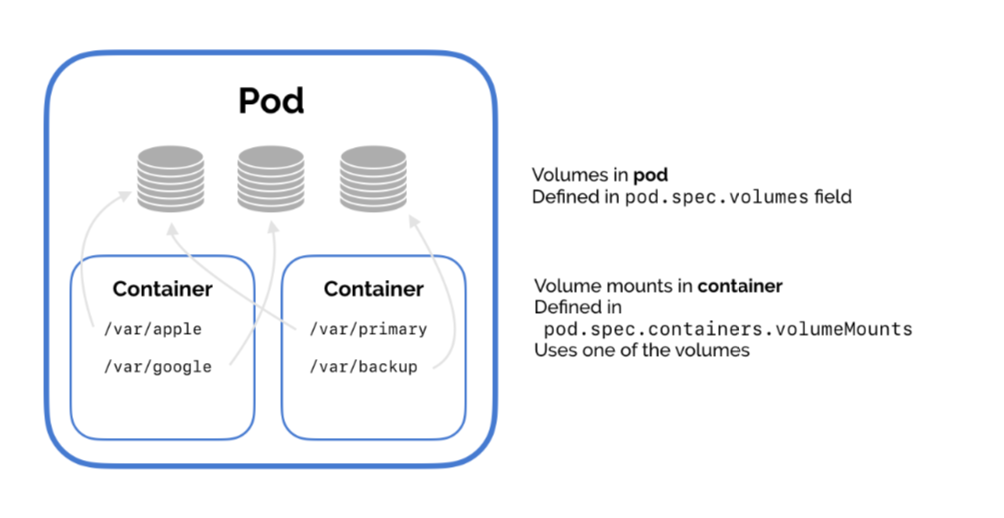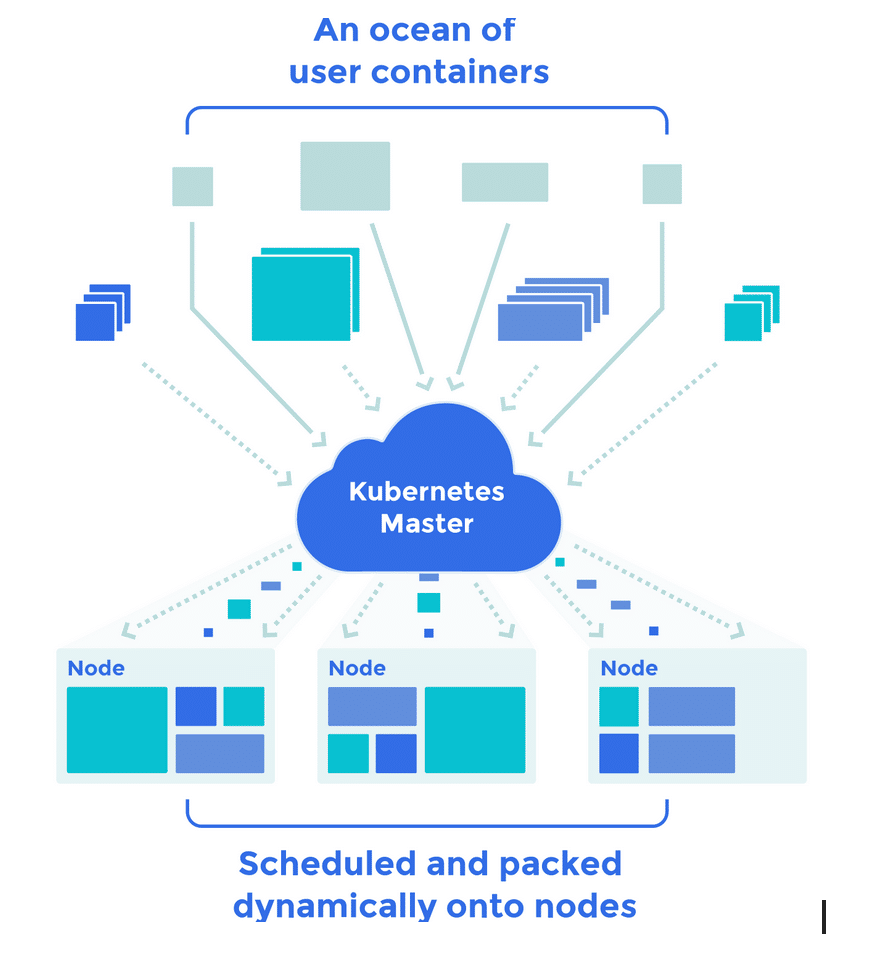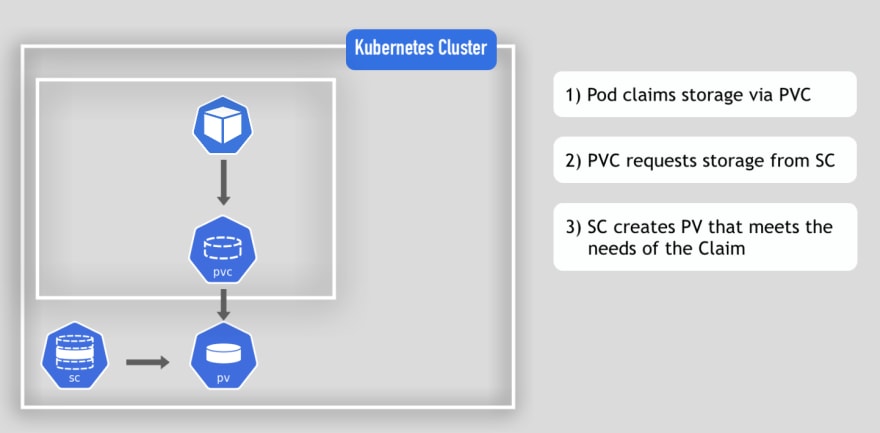
Deleted: This is a reclaim policy in which the plugins have been supported by it which can delete the objects from Kubernetes. Recycled: It is a reclaim policy that executes a basic scrub on the volume and makes it accessible again for a new claim if the administrator can construct a custom recycler pod template by using the controller manager command-line argument. #WHAT IS KUBERNETES VOLUME MANUAL#
Retained: The ‘retain’ is a reclaim policy that allows for manual reclamation of the assets, when the persistent volume chain has been deleted then the PV quite exists. 
Kubernetes persistent – Retained, Recycled, and Deleted In the production environment like database services it needs to access the highest available data storage, Kubernetes gives a lot of flexibility when it comes to persistent data storage in which every compound can use the particular mechanism for data storage. Kubernetes persistent volumes – Use protection The Kubernetes persistent types are executed as plugins in which some are given as follows, azureDiskVolume: It is used to scale a Microsoft Azure Data Disk into a pod.
 secret: This type of volume has been used to pass the delicate data like passwords to the pod. gitRepo: It launches an empty directory and creates a duplicate git repository into it to be used by our pod. cephfs: It allows the existing volume of it to be launched into our pod, and the data has been carried to put on after when the pod is deleted from the node. rbd: It stands for Rados Block Device which allows being launched into our pod and the data has been maintained after the pod has been deleted from the node. glusterfs: It is the open-source network filesystem that allows the glusterfs to be arranged into our pod. flocker: This volume has been used to control the data volumes which is open-source in which it allows a dataset of it to organize in our pod, if the dataset does not survive in the flocker then we need to generate it by using the API of flocker.
secret: This type of volume has been used to pass the delicate data like passwords to the pod. gitRepo: It launches an empty directory and creates a duplicate git repository into it to be used by our pod. cephfs: It allows the existing volume of it to be launched into our pod, and the data has been carried to put on after when the pod is deleted from the node. rbd: It stands for Rados Block Device which allows being launched into our pod and the data has been maintained after the pod has been deleted from the node. glusterfs: It is the open-source network filesystem that allows the glusterfs to be arranged into our pod. flocker: This volume has been used to control the data volumes which is open-source in which it allows a dataset of it to organize in our pod, if the dataset does not survive in the flocker then we need to generate it by using the API of flocker.  iscsi: The ISCSI volume allows to existing volume SCSI over IP volume to be set into our pod. nfs: The NFS stands for Network File System which can organize into our pod and the data from it has been removed when the pod is taken out from the node and the volume only gets down. awsElasticBlockStore: This volume has been organizes the amazon Wb Services Elastic Block store into our pod same as GCE persistent disk, the complete data in this volume remains undamaged when the pod has been deleted from node. gcePersistentDisk: This type of volume can scale the persistent disk of Google Compute Engine into our pod and the whole data from this volume can be carried when a pod has been deleted from the node. hostPath: This volume can able to scale a file or directory from the filesystem of the node. When a pod has been allocated to a node then the emptyDir volume has been generated in which if the pod is running on the node then it may be working for a long time, in this case at first the volume is empty at the beginning and the container will read and write the file and when the pod is taken out then the data has also been deleted from the emptyDir. Kubernetes types of volumes: The Kubernetes volume is like a directory that can be accessible to the container in a pod and it has various types as given below, In Kubernetes, the word PersistentVolume mention for storage of assets which can be designed to help us to control the storage of our applications, the assets of the persistent storage elements belong to the cluster and it goes independently to the pod, the persistent volume is the section of network storage that has been scaled by the administrator which has resources in the cluster that is independent of any separate pod which can use the persistent volume.
iscsi: The ISCSI volume allows to existing volume SCSI over IP volume to be set into our pod. nfs: The NFS stands for Network File System which can organize into our pod and the data from it has been removed when the pod is taken out from the node and the volume only gets down. awsElasticBlockStore: This volume has been organizes the amazon Wb Services Elastic Block store into our pod same as GCE persistent disk, the complete data in this volume remains undamaged when the pod has been deleted from node. gcePersistentDisk: This type of volume can scale the persistent disk of Google Compute Engine into our pod and the whole data from this volume can be carried when a pod has been deleted from the node. hostPath: This volume can able to scale a file or directory from the filesystem of the node. When a pod has been allocated to a node then the emptyDir volume has been generated in which if the pod is running on the node then it may be working for a long time, in this case at first the volume is empty at the beginning and the container will read and write the file and when the pod is taken out then the data has also been deleted from the emptyDir. Kubernetes types of volumes: The Kubernetes volume is like a directory that can be accessible to the container in a pod and it has various types as given below, In Kubernetes, the word PersistentVolume mention for storage of assets which can be designed to help us to control the storage of our applications, the assets of the persistent storage elements belong to the cluster and it goes independently to the pod, the persistent volume is the section of network storage that has been scaled by the administrator which has resources in the cluster that is independent of any separate pod which can use the persistent volume. 
The Kubernetes persistent volumes are defined as, it is a section of the repository in the cluster which has been equipped by an administrator by using the repository classes, it is assets in the cluster such as node which is also an asset in the cluster, they are volumes plugins like volumes but they have a lifecycle which can be liberated of any individual pod and that can use the persistent volumes, it is commonly used for databases in Kubernetes because the database want to approach its data at all time by supporting the persistent volume in which it can be attached to the pod. Introduction to Kubernetes Persistent Volumes








 0 kommentar(er)
0 kommentar(er)
